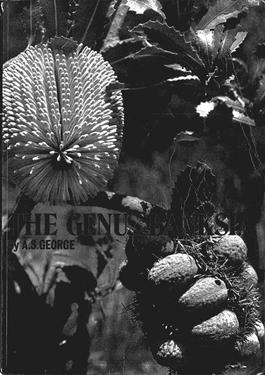The genus Banksia L.f. (Proteaceae) facts for kids
"The genus Banksia L.f. (Proteaceae)" is a special book from 1981. It was written by Alex George, a famous plant expert. This book is all about how to classify and name different types of Banksia plants. Banksias are a group of unique plants found mostly in Australia.
This book was published by the Western Australian Herbarium in a science magazine called Nuytsia. It was a very important update to how Banksias were grouped. Before this book, the last big update was in 1870 by George Bentham in his book Flora Australiensis.
Discovering New Banksia Plants
One of the most exciting things about Alex George's book was that he officially described many new kinds of Banksia plants. He found ten new species and nine new varieties! This means he gave them their scientific names and explained what made them different.
Here are a few examples of the new Banksia plants he described:
- B. aculeata (Prickly Banksia)
- B. chamaephyton (Fishbone Banksia)
- B. cuneata (Matchstick Banksia)
- B. grossa (Coarse Banksia)
- B. lanata (Coomallo Banksia)
- B. micrantha
- B. plagiocarpa (Dallachy's Banksia)
- B. saxicola (Grampians Banksia)
- B. scabrella (Burma Road Banksia)
- B. telmatiaea (Swamp Fox Banksia)
He also changed the names or groups for some Banksia plants that were already known. For example, B. sphaerocarpa var. glabrescens was renamed to B. incana. Also, B. collina and B. cunninghamii were moved into smaller groups within another species called B. spinulosa.
Organizing Banksia Groups
Alex George also created a brand new way to organize the different types of Banksia plants. Imagine putting all your toys into different boxes and then putting those boxes into bigger shelves. That's kind of what he did for Banksias!
He made new "sections" and "series" within the main Banksia group. These are like smaller sub-groups that help scientists understand how different Banksia plants are related to each other. He created six new series, including:
- B. ser. Grandes
- B. ser. Tetragonae
- B. ser. Spicigerae
This new way of organizing Banksias was very important. Most scientists agreed with his ideas, and his system is still used today to help understand these amazing Australian plants.
Checking Old Plant Samples
To make sure everything was correct, Alex George looked at many old plant samples. He visited places like the Royal Botanic Gardens, Kew in England, where very old and important plant collections are kept. By carefully studying these historical samples, he was able to confirm the correct "lectotype" for most of the Banksia plants that were already known. A lectotype is like a specific, chosen plant sample that acts as the official example for a species. This helps make sure everyone agrees on what a particular plant name means.


